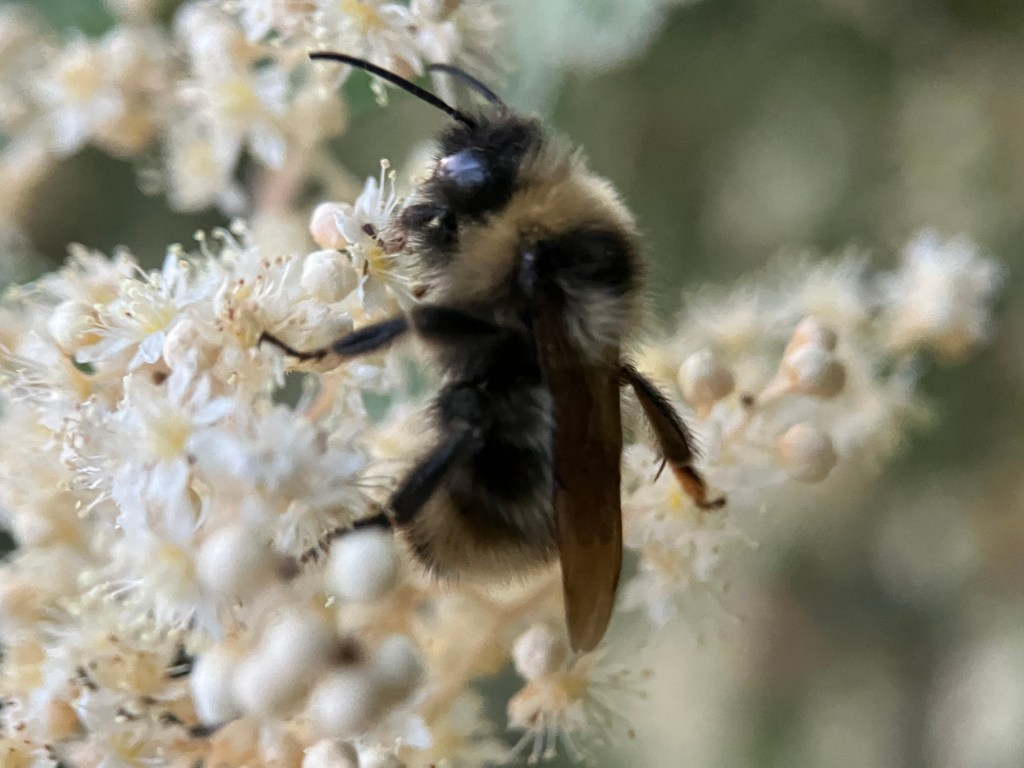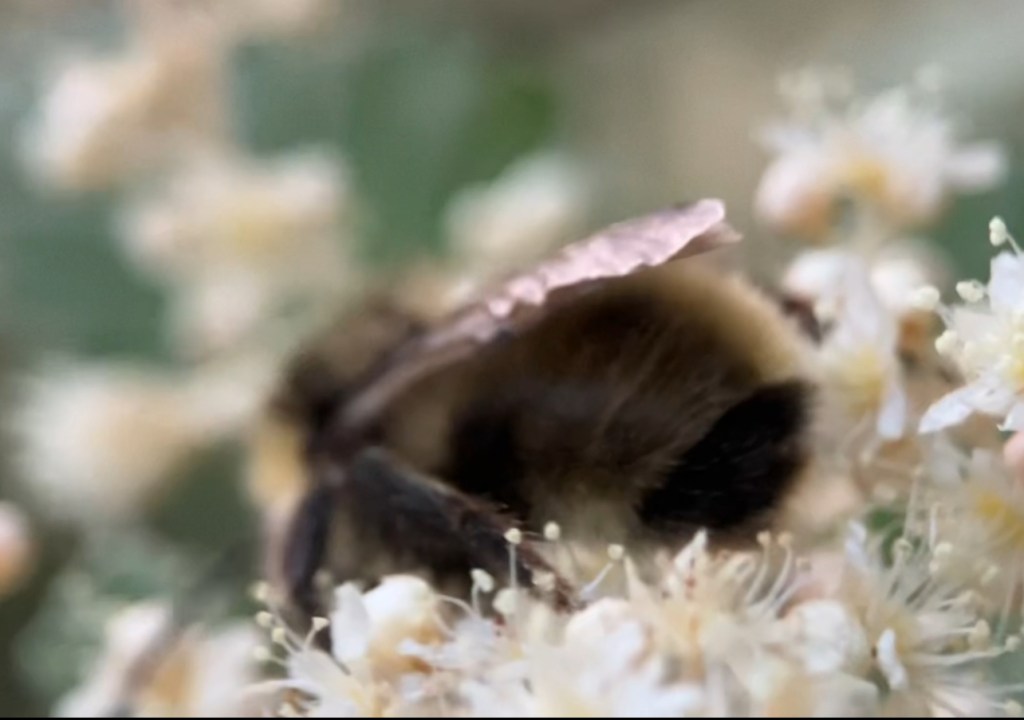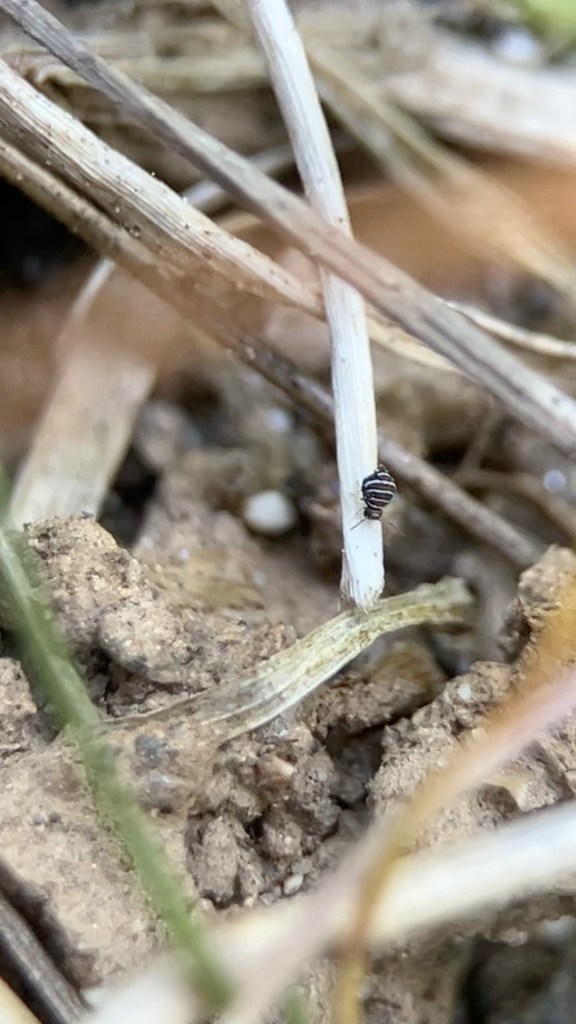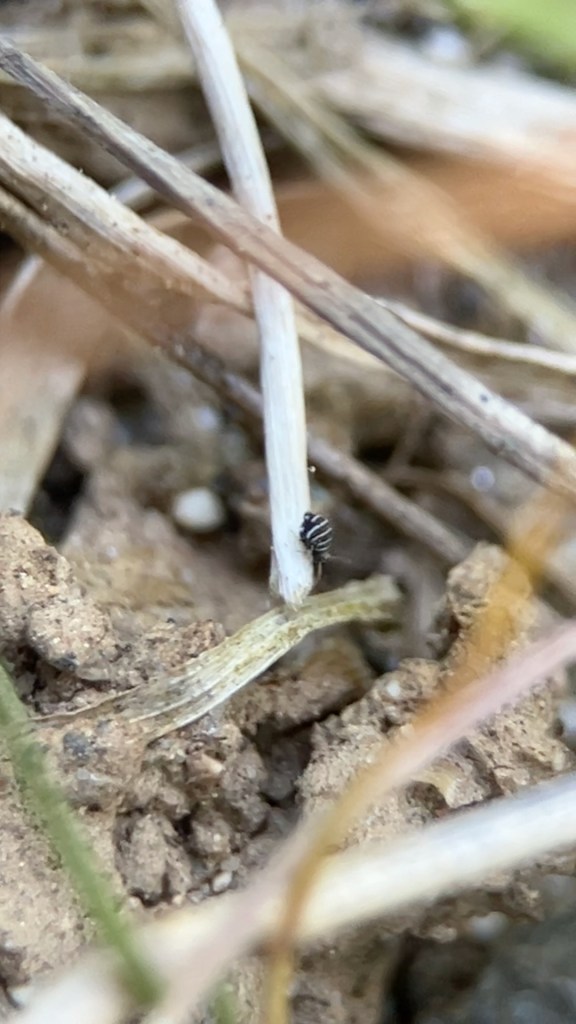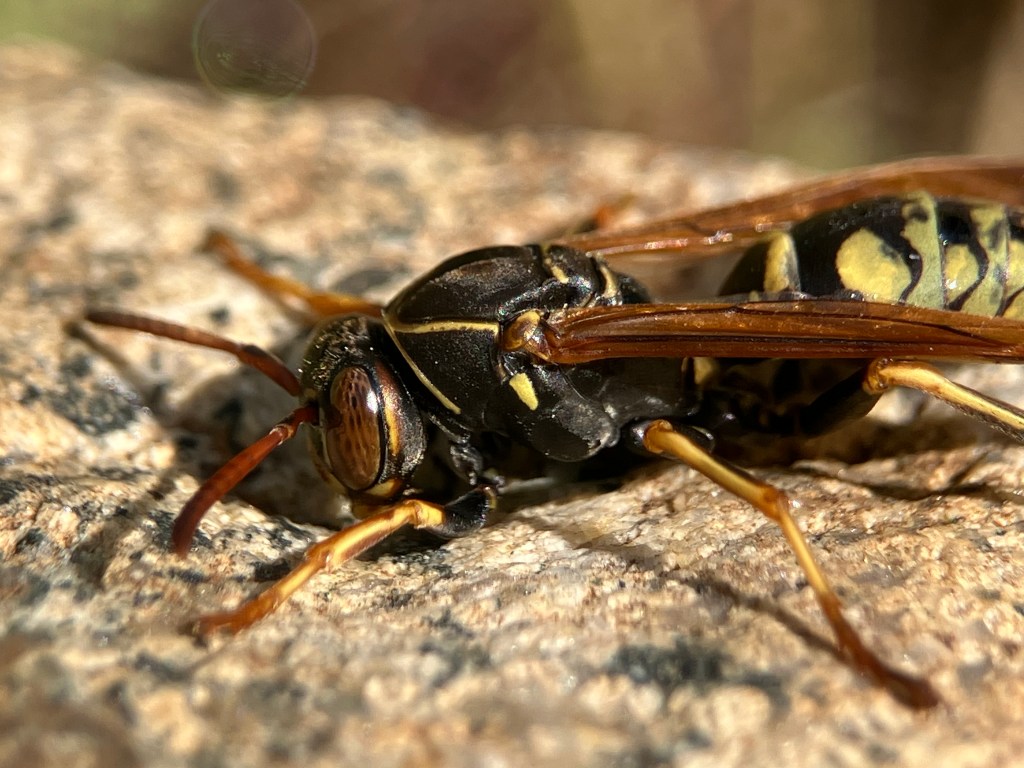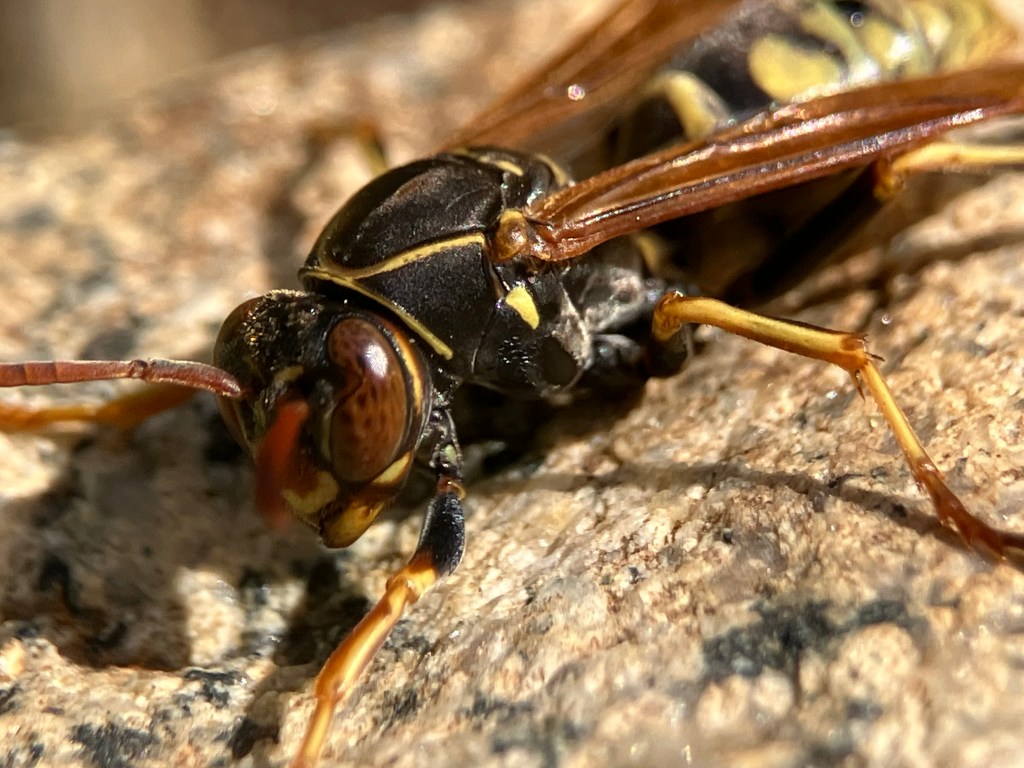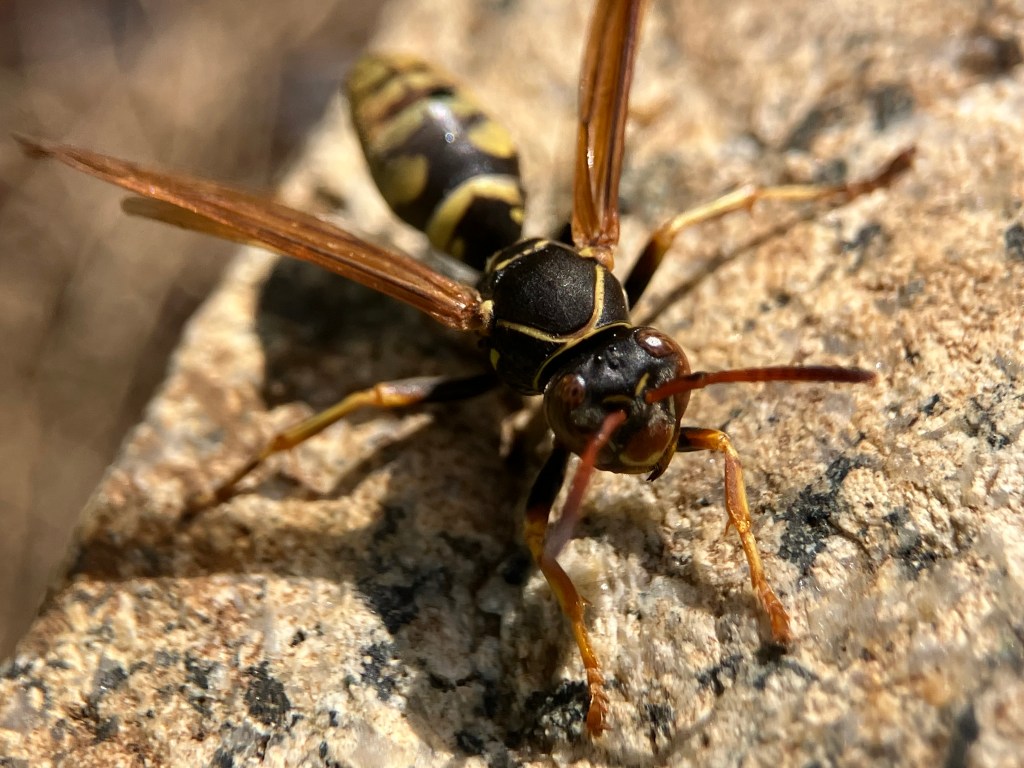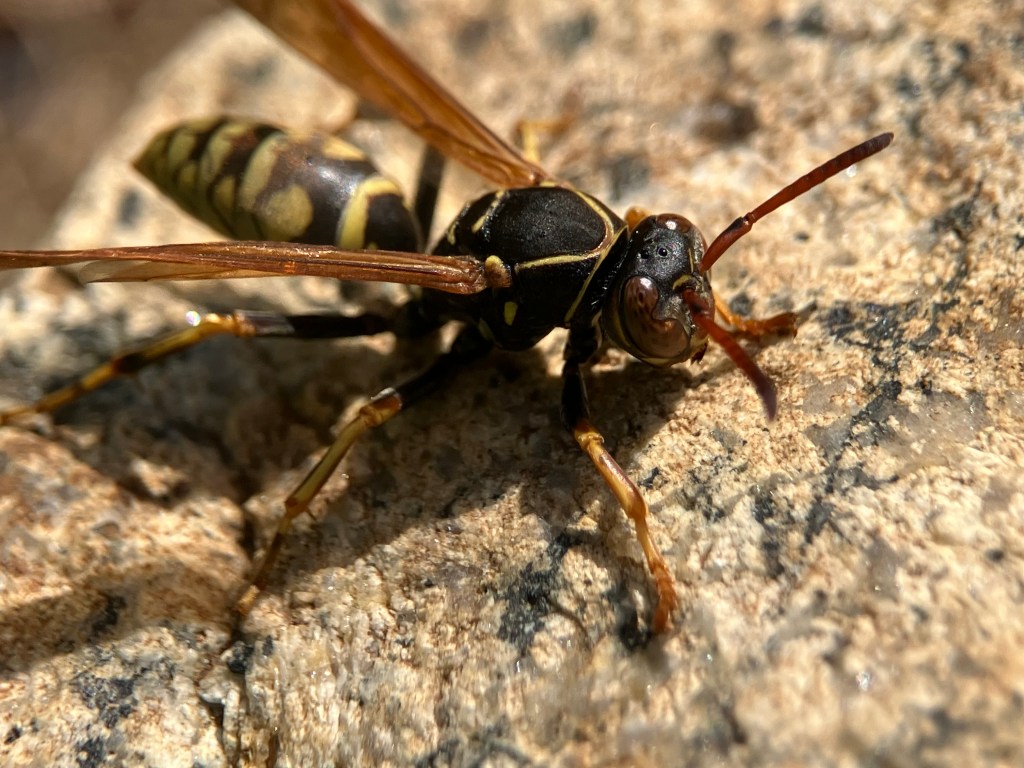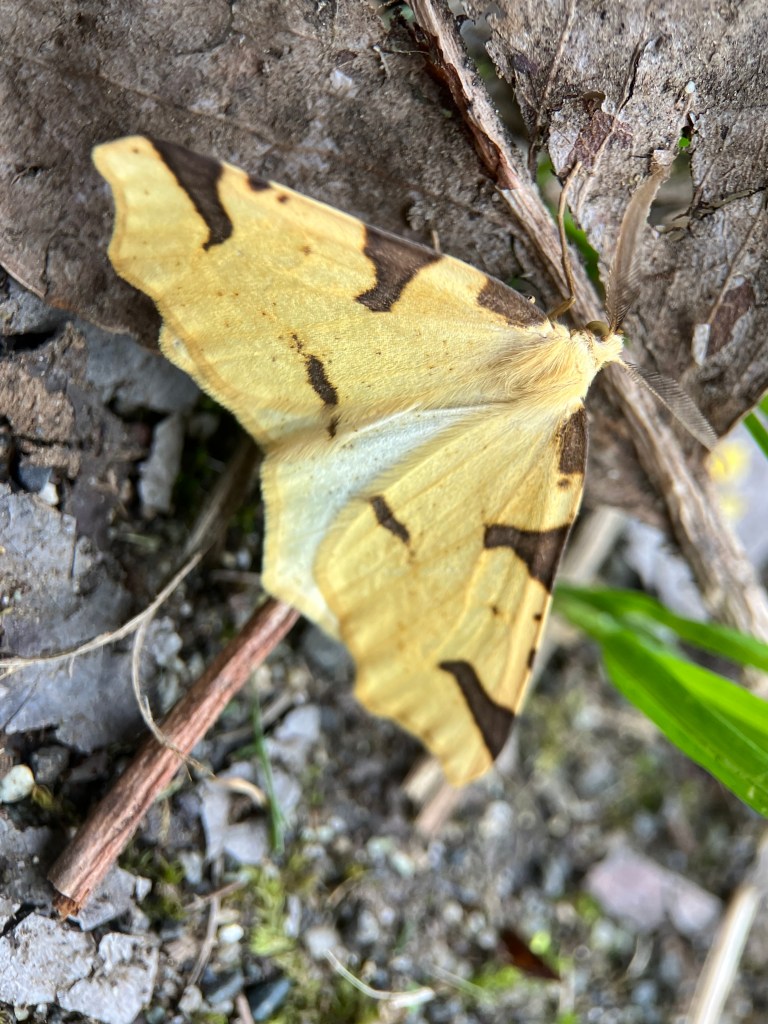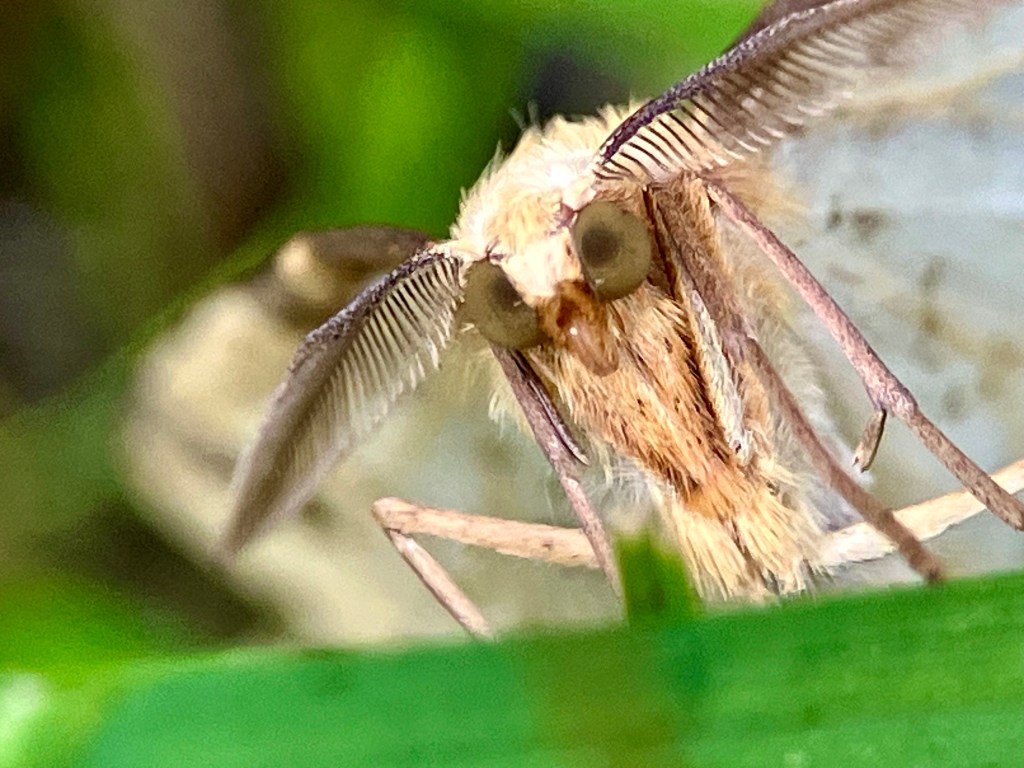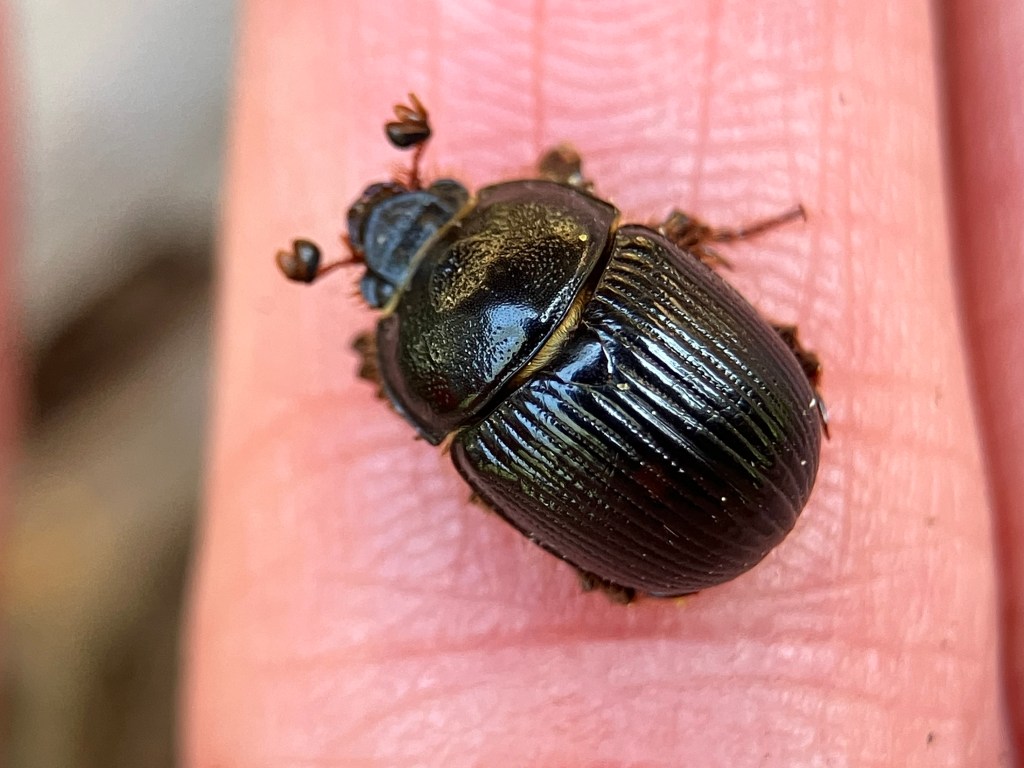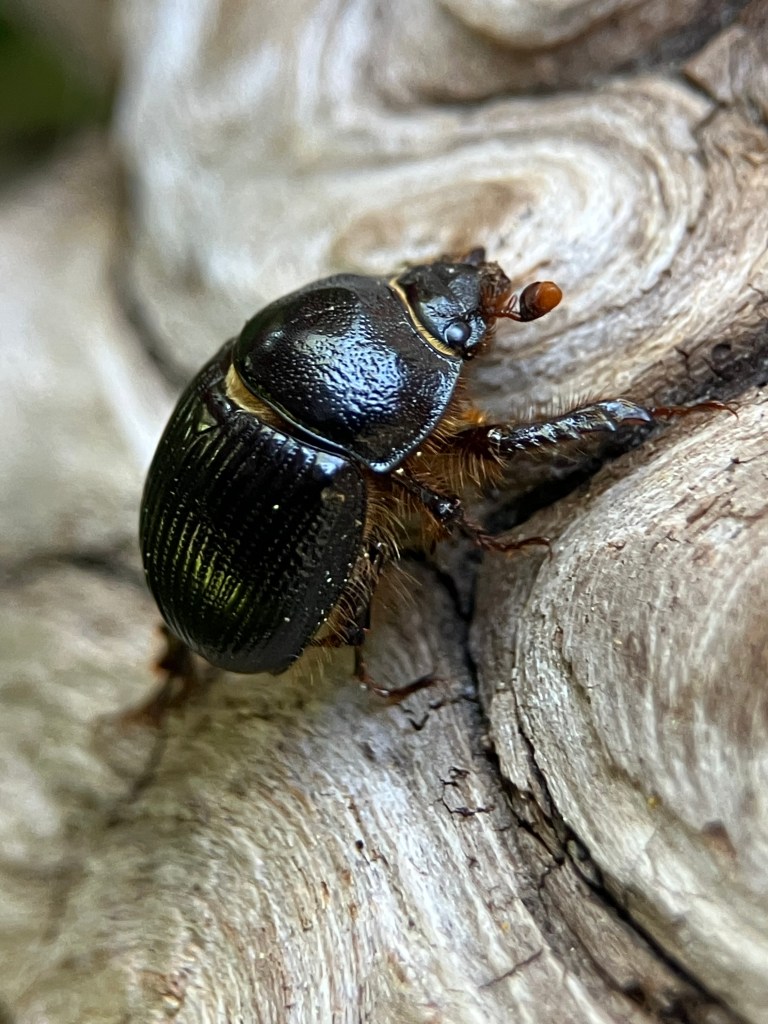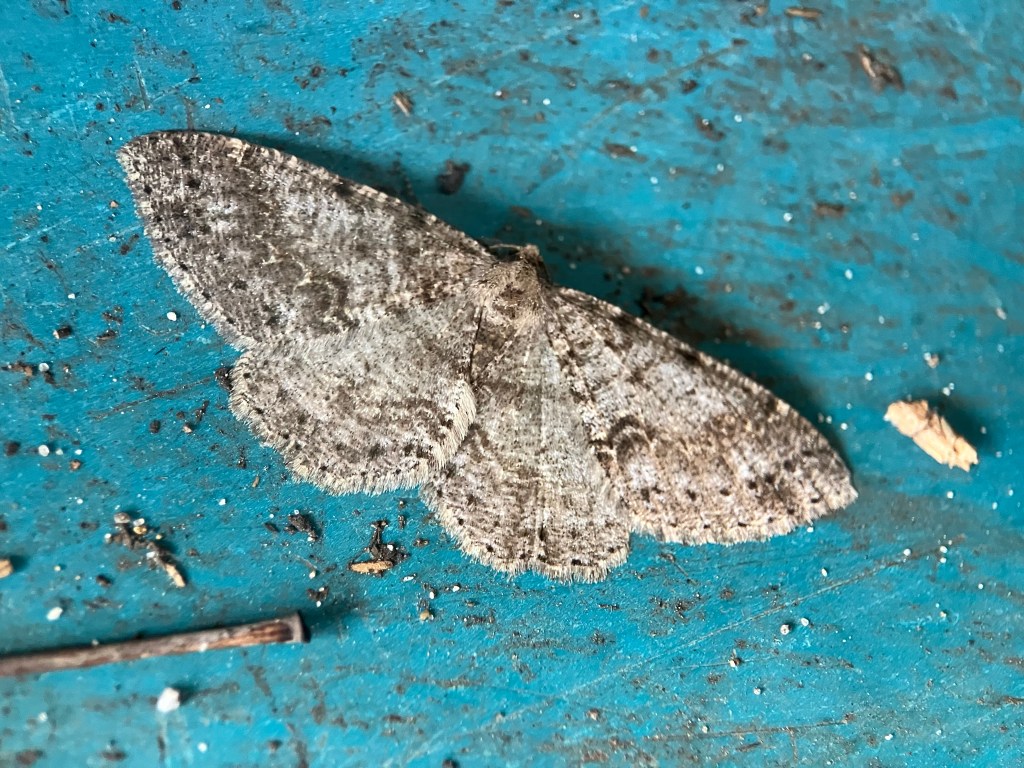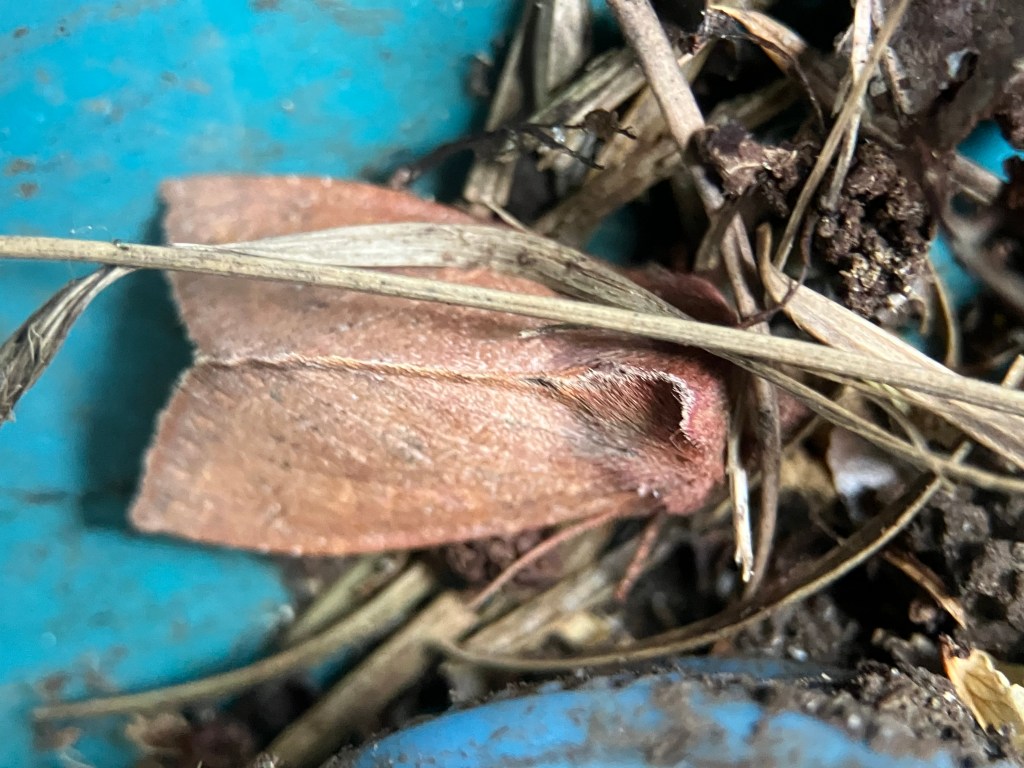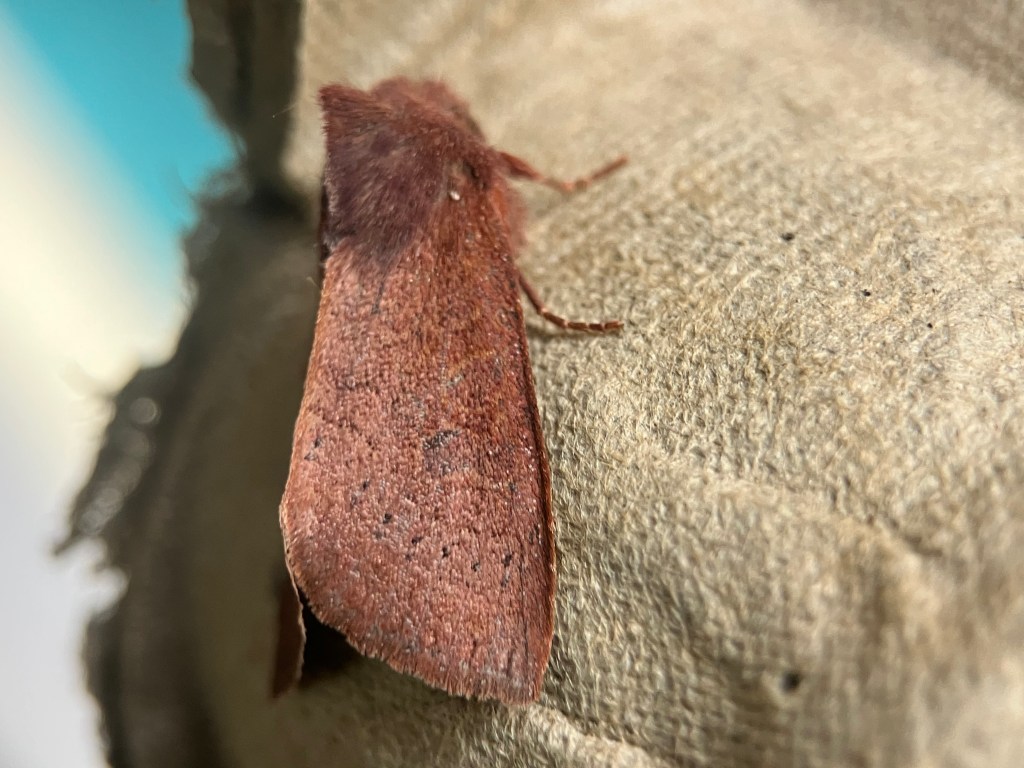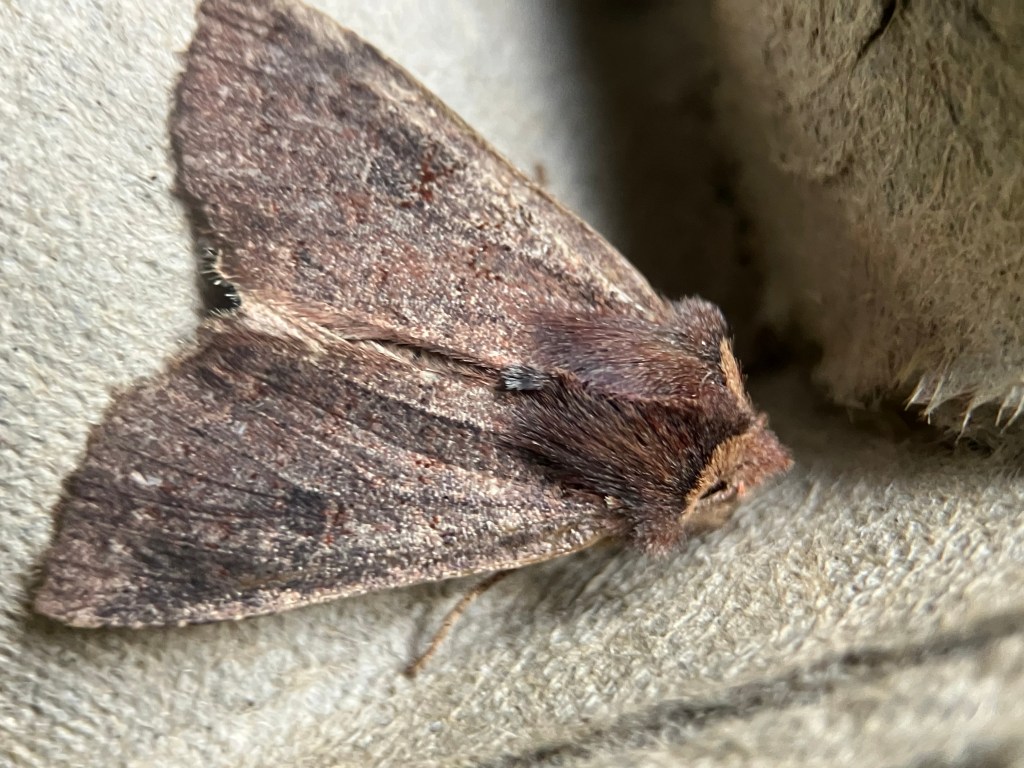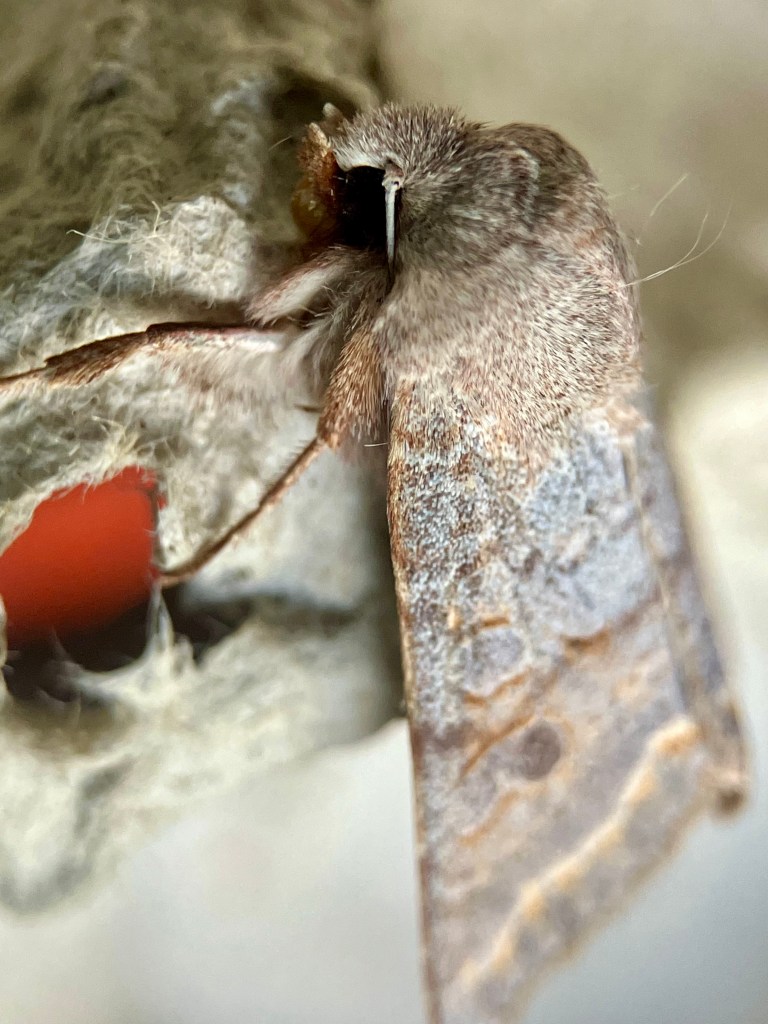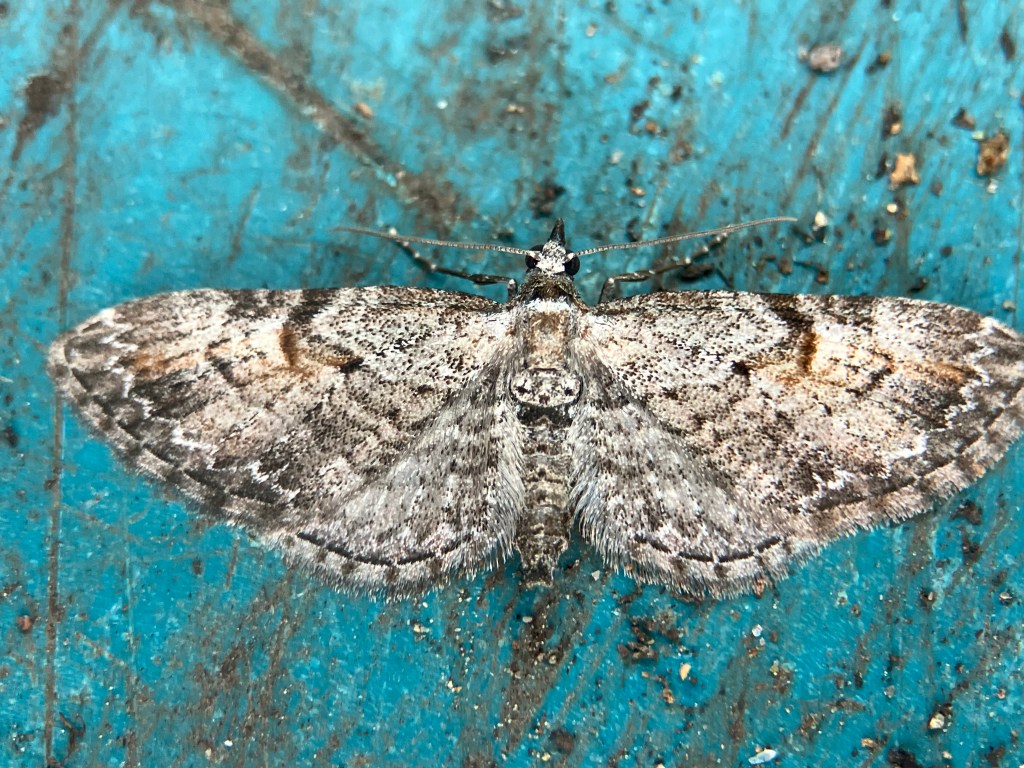December 18, 2025, A Kybos bug story


It’s been a good while since I’ve written up a blog post, but I found something I thought worth sharing after seeing these little ones on the side of our above ground pool the afternoon of December 18, 2025. My story, however, is going to take us back to September of 2022.
One evening, carrying out the recycles to our barn storage area, I noticed this pile of sawdust and peculiar arrangement of little green bugs around a hole in the middle on a cedar log in our yard.
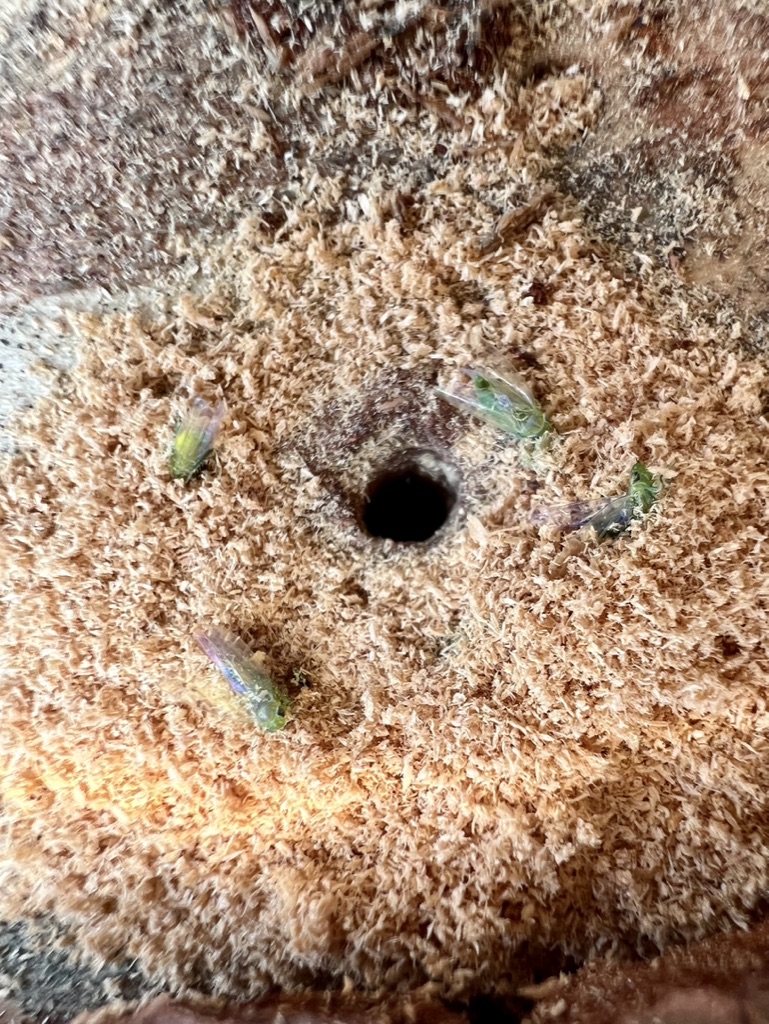
Identification of the occupant and creator of this unique arrangement took me awhile. I believe the wasp is a Crabronid wasp in the genus Crossocerus. She was using an old beetle exit hole as the perfect burrow for her nest construction.
Fascinated, I sat and watched her for hours on end for about two weeks. She would be gone by morning when I woke up, but at the end of the day, I’d find a little pile of sawdust from her excavation work and a circle of ONLY these green bugs arranged so carefully on top.
Just before sunset, she would return to pack in her assembled collection of tiny prizes one at a time, provisioning each of the cells she had constructed for her eggs with the little iridescent green bugs, paralyzed, but still alive. Creepy, right? Later, the eggs she would lay in these cells would hatch into little wasp larvae and consume the still-living, little green bugs…one by one.

Alas, later that winter, I noticed my wasp’s cluster of burrows in that log had been excavated by one of our resident Hairy Woodpeckers. They find all the buried bugs – especially it seems they find the ones in the wood siding of our house. We have a line of little holes pecked all ‘round. Naughty birds!
Identifying the little green bugs took me a long while. Mostly, because I get distracted and have to come back to a multitude of projects! I believe these little green bugs are in the genus Kybos. Kybos bugs are a type of leafhopper in the family Cicadellidae. They are associated with Salix sp. (Willows) and (Populus sp.) Poplars which are their host plants (Hamilton, 1972). The bugs feed on sap. That would certainly fit. We have lots of Willows nearby and three Quaking Aspen trees on our property.
And the wasp? One of the identifying features of Crossocerus is the ocelli form an equilateral triangle. In the video, I think I can make out just enough of this to be definitive. The ecology for some species in this genera also fits with a description found in Krombein (1979) about this group modifying pre-existing cavities or burrows in wood formed by wood boring insects.
The relationship between this wasp and the Kybos leafhoppers was intriguing to me because it was the ONLY species of bug I found the little wasp to collect and arrange to provision her offspring with. While I looked for information about this relationship extensively, I did not find any literature with previously reported documentation about this. Krombein (1979) mentions the collection of prey for various species, but none more specific than family Cicadellidae.
I wish it had been possible to identify the wasp to species. It would be amazing to see this again. Perhaps I will be lucky enough to stumble upon another one in action one day.
Coming back to the video I began with. Yesterday, December 18, 2025, I saw another of those little green bugs on the side of our pool. It was hanging out with a friend, a Bark Louse (Eptopsocus sp). Either they were enjoying the wind in their antennae or hanging onto the rim for their very lives. It was a very blustery day!
References
Bugguide.net. 2025. Kybos. Iowa State University. https://bugguide.net/node/view/120601
Hamilton, K G A. (1972). The leafhopper genus Empoasca subgenus Kybos in southern interior of British Columbia. Journal of the Entomological Society of British Columbia, 69, 58–67. https://www.biodiversitylibrary.org/part/213774
Krombein, Karl V. (1979). Catalog of hymenoptera in America north of Mexico (Vol. 2). Smithsonian Institution Press. https://www.biodiversitylibrary.org/item/26295
Krombein, Karl V. (1979). Catalog of hymenoptera in America north of Mexico (Vol. 2, p. 1665). Smithsonian Institution Press. https://www.biodiversitylibrary.org/page/4575889


